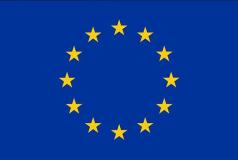Mediterranean and pan-European forecast and Early Warning System against natural hazards (MedEWSa)
Situación actual
The project was initially developed by WMO and external partners during mid-late 2022 in response to an EC Horizon Programme call under the 'Disaster Resilient Society’ topic, titled ‘Improved impact forecasting and early warning systems supporting the rapid deployment of first responders in vulnerable areas’. The MedEWSa project is now coordinated by Justus-Liebig-Universität Gießen (JLU).
Alcance
Natural hazards, such as extreme weather events, are exacerbated by climate change. As a result, emergency responses are becoming more protracted, expensive, frequent, and stretching limited available resources. This is especially apparent in rapidly warming regions. MedEWSa addresses these challenges by providing novel solutions to ensure timely, precise, and actionable impact and finance forecasting, and early warning systems (EWS) that support the rapid deployment of first responders to vulnerable areas. Specifically, MedEWSa will deliver a sophisticated, comprehensive, and innovative pan-European–Mediterranean–African solution comprising a range of complementary services. Building on existing tools MedEWSa will develop a fully integrated impact-based multi-hazard EWS. This call contained five expected outcomes, all of which will be specifically addressed by MedEWSa. Led by JLU, MedEWSa will be an exemplar of the UN Secretary General’s March 2022 call to ensure that everyone on Earth is protected from extreme weather and climate-related hazards by EWS within the next five years.
Through eight carefully selected pilot sites (areas in Europe, the southern Mediterranean, and Africa with a history of being impacted by natural hazards and extreme events with cascading effects), four twins will be created:
Twin #1: Greece (Attica) – Ethiopia (National Parks): wildfires and extreme weather events (droughts, wind)
Twin #2: Italy (Venice) – Egypt (Alexandria / Nile Delta): coastal floods and storm surges
Twin #3: Slovakia (Kosice) – Georgia (Tbilisi): floods and landslides
Twin #4: Spain (Catalonia) – Sweden (countrywide): heatwaves, droughts and wildfires.
The twins will bridge areas with different climatic/physiographic conditions, yet subject to similar hazards, and are well positioned to deliver long-term bi-directional knowledge transfer. They will demonstrate the transferability and versatility of the tools developed in MedEWSa.
Objetivos
The simple output of MedEWSa will be a DSDS at a technology readiness level of between 6 and 8, in the areas defined by the twin case studies.
Estructura
MedEWSa will utilise the experience and complementarity of its partners to address all five of the expected outcomes for this IA (DRS-01-05) to catalyse and embed long-term institutional and community capacities in climate risk reduction, climate change adaptation (CCA), and MHEWS. MedEWSa tools will be ‘technology demonstrated in relevant environment’ (TRL6) or developed asoperational tools in use across Europe, in regional or national areas, ‘system complete and qualified’ (TRL8). Building on existing aims to achieve a TRL6-8, offering a scalable, modular multi-hazard platform.
Fondo
The project started in November 2023 and is now operational. A baseline is being developed and the work programme agreed with the funder is well underway (May 2024).
- Región:
- Region VI: Europe ,
- Region I: Africa


- Climate Resilience and Adaptation
- Disaster Risk Reduction
- Capacity Development
- Governance
- Early Warnings


